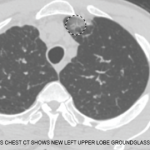They also found that the presence of LGE, denoting myocardial fibrosis, correlated significantly with longer disease duration, higher erythrocyte sedimentation rate and the presence of antiphospholipid antibodies, Dr. Mavrogeni said.
Cardiac MRI might “facilitate the differential diagnosis and patients’ risk stratification,” she said.
ad goes here:advert-1
ADVERTISEMENT
SCROLL TO CONTINUE
Thomas R. Collins is a freelance medical writer based in Florida.
References
- Caforio AL, Pankuweit S, Arbustini E, et al. Current state of knowledge on aetiology, diagnosis, management, and therapy of myocarditis: A position statement of the European Society of Cardiology Working Group on Myocardial and Pericardial Diseases. Eur Heart J. 2013 Sep;34(33):2636–2648, 2648a–2648d.
- Terasaki F, Hayashi T, Hirota Y, et al. Evolution to dilated cardiomyopathy from acute eosinophilic pancarditis in Churg-Strauss syndrome. Heart Vessels. 1997;12(1):43–48.
- Courand PY, Croisille P, Khouatra C, et al. Churg-Strauss syndrome presenting with acute myocarditis and cardiogenic shock. Heart Lung Circ. 2012 Mar;21(3):178–181.


